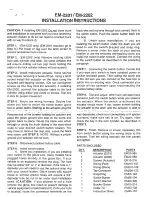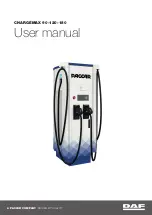
136
D
Always slow down in gusty crosswinds.
This will allow you much better control.
D
Drive slowly onto curbs and, if pos-
sible, at a right angle. Avoid driving
onto high, sharp−edged objects and
other road hazards. Failure to do so
can lead to severe tire damage result-
ing in tire bursts.
D
When parking on a hill, turn the front
wheels until they touch the curb so
that the vehicle will not roll. Apply the
parking brake, and put the running
mode selector lever into "P". If neces-
sary, block the wheels.
D
Washing your vehicle or driving through
deep water may get the brakes wet. To
see whether they are wet, check that
there is no traffic near you, and then
press the pedal lightly. If you do not
feel a normal braking force, the brakes
are probably wet. To dry them, drive
the vehicle cautiously while lightly
pressing the brake pedal with the park-
ing brake pulled. If they still do not
work safely, pull to the side of the road
and call an EV service station for as-
sistance.
CAUTION
D
Before driving off, make sure the
parking brake is fully released and
that the parking brake reminder
light is off.
D
Do not leave your vehicle unat-
tended with the "READY" light on.
D
Do not rest your foot on the brake
pedal while driving. It can cause
dangerous overheating, needless
wear, and poor power saving.
D
To drive down a long or steep hill,
reduce your speed and downshift.
Remember, if you ride the brakes
excessively, they may overheat and
not work properly.
D
Be careful when accelerating or
braking on a slippery surface. Sud-
den acceleration or motor braking,
could cause the vehicle to spin or
skid.
D
Do not drive in excess of the speed
limit. Even if the legal speed limit
permits it, do not drive over 125
km/h (79 mph) unless your vehicle
has high−speed capability tires.
Driving over 125 km/h (79 mph)
may result in tire failure, loss of
control and possible injury. Be sure
to consult a tire dealer to determine
whether the tires on your vehicle
are high−speed capability tires or
not before driving at such speeds.
D
Do not continue normal driving
when the brakes are wet. If they are
wet, your vehicle will require a
longer stopping distance, and it
may pull to one side when the
brakes are applied. Also, the park-
ing brake will not hold the vehicle
securely.
Tips for driving in various
conditions
Summary of Contents for RAV4 2000
Page 22: ...12...
Page 42: ...32...
Page 104: ...94...
Page 122: ...112...
Page 130: ...120...
Page 176: ...166...
Page 179: ...169 Fuse locations...
Page 192: ...182...
Page 202: ...192 Removing cover clips Installing cover clips License plate lights...
Page 203: ...193...
Page 204: ...194...
Page 210: ...200...
Page 214: ...204...
Page 215: ...205 INDEX SECTION 11...
















































